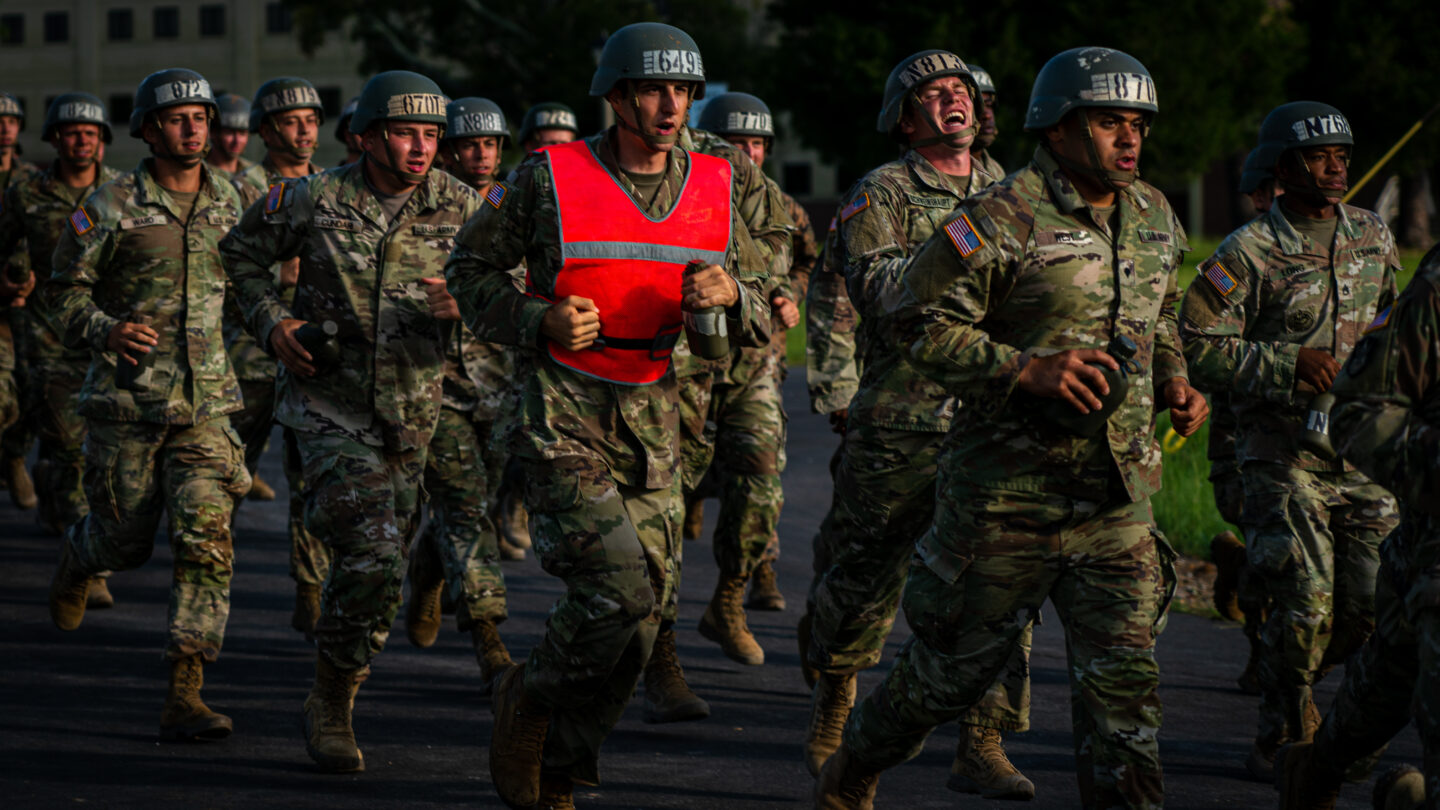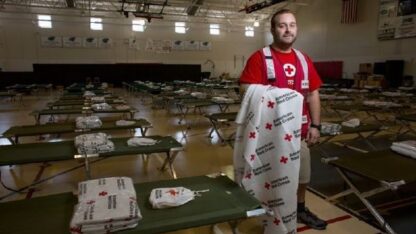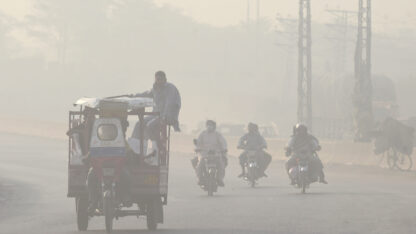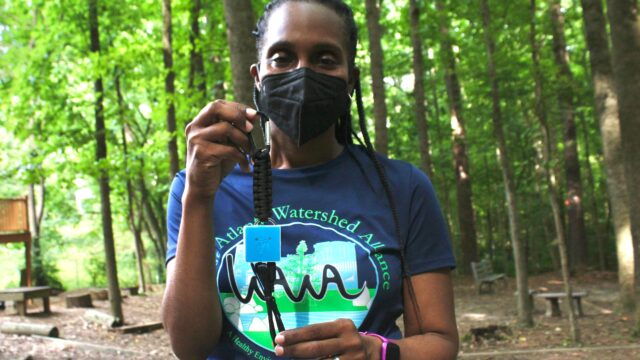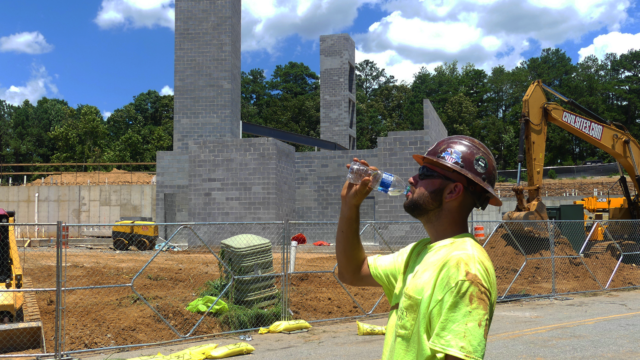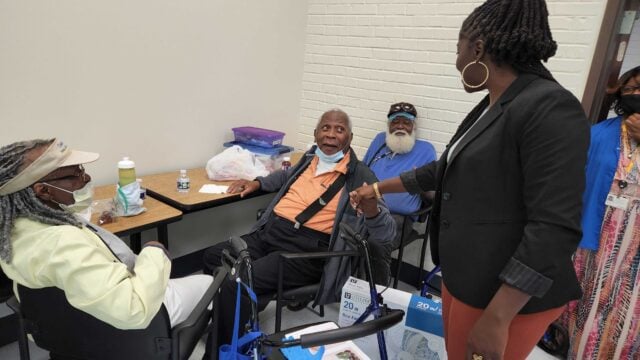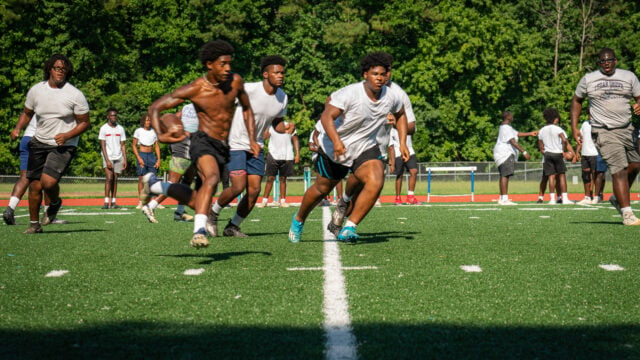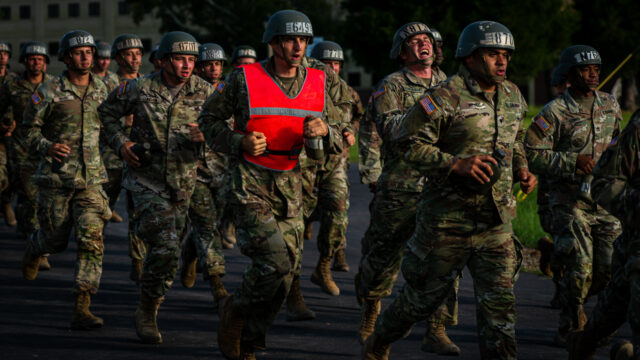This coverage is made possible through a partnership with WABE and Grist, a nonprofit, independent media organization dedicated to telling stories of climate solutions and a just future.
On a hazy August morning, a company of soldiers jogged toward the airborne training center at Fort Benning, calling out a cadence as they ran. The day would eventually hit a heat index of 98 degrees Fahrenheit, but the soldiers weren’t wearing lightweight running clothes. They were in uniform: head to toe camouflage, long sleeves and pants, caps, boots.
This company spent three weeks in the brutal August heat training to parachute out of planes. And along with teaching them and pushing them to succeed, their instructors had to keep an eye out for heat stroke.
“One of the first signs and symptoms we’ll see on foot marches and runs, medically called ataxia, it’s lack of muscular coordination,” said Lieutenant Colonel Dave DeGroot, who directs the Army’s heat center at Ft. Benning. “The way I describe it to drill sergeants: baby deer legs, wobbling all over.”
When this happens, a drill sergeant should stop the soldier, get them out of that hot uniform and wrap them in sheets soaked in ice water.
“And to the best of my knowledge, every single time that’s done right, the heatstroke casualty lives,” DeGroot said.
Fort Benning has always dealt with heat. Before the heat center was established in 2019, this post had the most heat injuries anywhere in the military – which made it an ideal place to study how to treat and prevent those injuries.
Now, the heat center helps prevent soldiers from getting sick or dying. It treats them when they suffer from the heat, studies the impacts of heat and establishes best practices for prevention and treatment of heat illness.
And as temperatures keep rising, the center shares expertise with other branches of the military – because so many bases are in the hottest parts of the country, and climate change is making it hotter everywhere.
Some of the solutions are simple, like providing soldiers with water cards to keep track of how much they drink. The goal is to prevent hyponatremia, a potentially fatal lack of salt in the system that can be caused by drinking too much water.
But the water cards also help soldiers stay hydrated in the heat.
“It’s very much a complementary thing, because it makes them aware of, ‘oh yeah, I’ve only had two liters of water today, and I’ve been outside training in the heat all day. I need to drink a little bit more,’” DeGroot said.
Another best practice they’ve found: careful pacing on timed marches. Someone equipped with a GPS device marches at the precise pace needed to hit the minimum time for a particular exercise. If soldiers repeatedly fall behind that pace, they’re pulled off the course.
“Those are the individuals who then, ‘oh, there’s a mile left, oh, I’m going to fail.’ And they’re going to dig deep and they’re going to sprint and they’re going to collapse,” DeGroot said.
Setting a maximum pace with a vehicle that soldiers aren’t allowed to get ahead of can also keep faster soldiers from going too hard in the heat and hurting themselves.
This can be a big adjustment in the Army’s culture of achievement. But DeGroot said the shift is essential.
“If what you do today impairs your ability to train tomorrow, today’s training wasn’t good,” he said.
It’s difficult to assess the impact the heat center is having at this point, three years into its role as a formal part of Ft. Benning, in part because of COVID-19.
Heat stroke cases did drop – from 96 in 2019 to 51 in 2021 – but DeGroot said that may not be solely due to the heat center’s work. Covid protocols restricted the movements of newly-arrived trainees for 14 days. While the point was to monitor them for Covid symptoms, the wait also allowed them to acclimatize to the heat, which may have helped some soldiers from colder climates avoid heat illness.
Still, a paper co-authored by DeGroot assessing the heat center’s impact did find “a general trend of decreasing severity and frequency of heat illness casualties” at Ft. Benning, and expressed “cautious optimism” that the heat center is helping.
And it has already led to some changes. In the fall of 2020, standardized training in preventing heat illness was added for all drill sergeants. This year, based on a high number of heat stroke cases during runs and foot marches, the heat center suggested that events over four miles should be classed as “high risk,” meaning medical personnel would be required. The garrison safety office is reviewing the issue.
“There’s demands placed on the military that are not new, but are unique to the military,” DeGroot said. “And this problem isn’t going to go away. It’s hot out. And we need to be adequately prepared.”
This story is part of WABE’s The Heat Effect series.
